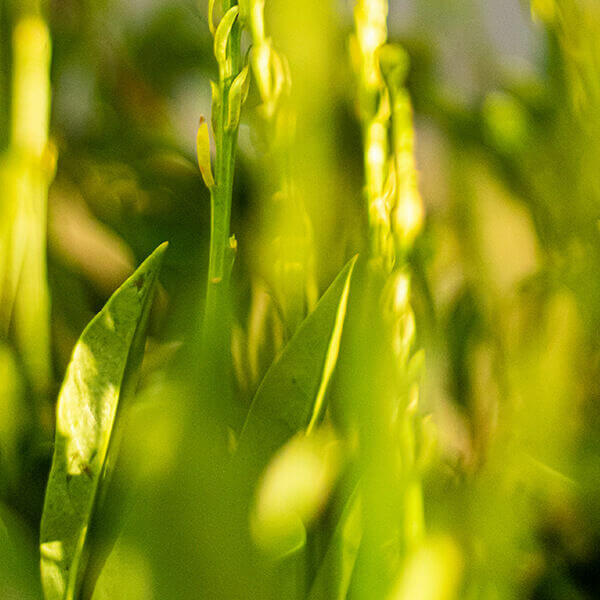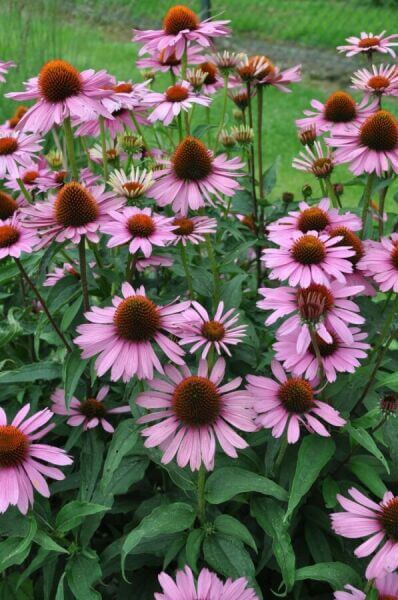Best Hedging Plants For Garden Art
Best Hedging Plants For Garden Art
Blog Article
Best Hedging Plants For Decking Borders
Boost your garden's attraction with lush hedge varieties such as Yew (Taxus), Thuja, Laurel, Photinia, and Bamboo, celebrated for their structural stability and ecological benefits.
Yew and Thuja supply evergreen coverage and winter season resilience, while Laurel provides quick growth and broad, fragrant leaves.
Photinia adds seasonal appeal with its lively red foliage, and Bamboo lends a low-maintenance, peaceful atmosphere.
These hedges improve air quality, minimize sound, and create tranquil, private areas.
Proper planting, spacing, and maintenance make sure energetic growth and environmental harmony.
Explore how these rich ranges can raise your garden's beauty and wellness.
Key Takeaways
Change Your Garden With Lush Hedge Ranges
- Select Yew for its thick, evergreen development and unparalleled longevity.
- Select Laurel for its fast growth and broad leaves, making sure quick personal privacy.
- Select Photinia for its dynamic seasonal foliage, which turns a striking dark red.
- Utilize Bamboo for a low-maintenance, winter-hardy hedge with aesthetic appeal.
- Space plants 2-3 per meter and prune routinely for optimum growth and health.
Popular Hedge Plants
When transforming a garden with rich hedge ranges, it's necessary to think about popular hedge plants such as Yew, Thuja, Laurel, and Photinia due to their distinct attributes and advantages.
Yew (Taxus) is extremely respected for its durability and thick, green development, making it a prime option for enduring landscapes.
Thuja is noted for its evergreen foliage and robust winter resilience.
Photinia includes seasonal vibrancy with red leaves that darken over time, creating dynamic visual appeal.
Laurel uses rapid development and fragrant, broad leaves, ideal for fast personal privacy.
Additionally, Bamboo is an outstanding choice for atmosphere, using a low-maintenance, winter-hardy alternative that improves the garden's aesthetic with its sophisticated, swaying walking sticks.
These selections cater to a variety of horticultural requirements and choices.
Benefits of Garden Hedges
Garden hedges offer a multitude of advantages, making them an important addition to any landscape. These natural barriers are economical to implement and provide substantial wind security, enhancing air blood circulation and contributing to noise decrease. The dense foliage of hedges like Thuja and Beech guarantees privacy by blocking exposure, creating a secluded and serene environment.
Hedges likewise play an essential function in microclimate policy, providing a steady environment that promotes plant development and lessens temperature variations. Their intricate leaf structures filter toxins, improving air quality and adding to a healthier garden community.
Moreover, hedges stand out in sound reduction, soaking up and deflecting sound waves to lower ambient noise levels. This double functionality of offering both acoustic and visual privacy enhances the overall serenity and visual appeal of any garden.
Planting and Maintenance Tips
For an effective hedge, careful preparation of the planting area is vital. Ensure the soil has correct pH and drainage to support strong root development.
Area the plants properly for the chosen species. Water the hedge often throughout its initial development phase, adjusting as needed with seasonal modifications.
Carry out a systematic insect control and illness avoidance method, using organic or chemical treatments when required. Routinely check for aphids, termites, and fungal infections.
Apply mulch to retain moisture and suppress weeds. Seasonal pruning promotes dense growth and air flow, necessary for plant health.
Following these standards will help you cultivate a dynamic, properly maintained hedge that boosts the appeal of your garden.
Spacing and Cutting Guidelines
Spacing and Trimming Guidelines
Proper spacing and trimming are crucial for cultivating healthy, visually appealing hedges. Adequate spacing ensures each plant receives adequate nutrients, light, and airflow.
Follow these standards for ideal hedge maintenance:
- Spacing: Position hedge plants 2-3 plants per meter to motivate robust development.
- Pruning Methods: Regular pruning is essential for keeping preferred hedge height and shape. Trim brand-new growth in summer and cut down older wood during winter season.
- Seasonal Care: Adjust cutting methods and schedules according to seasonal requirements to make sure plant health.
- Hedge Height: Routinely display and trim to keep the preferred hedge height and accomplish uniform aesthetics.
Adhering to these actions will ensure your hedge prospers, enhancing both the appeal and performance of your garden.
Choosing the Right Hedge
Selecting the Right Hedge
Picking the appropriate hedge includes examining factors such as mature height, foliage density, and ecological resilience. Successful hedge plant choice needs understanding each types' development characteristics and site-specific versatility.
For instance, Yew (Taxus) uses excellent longevity and dense development, while Thuja is significant for its winter resilience. Furthermore, thinking about upkeep requirements is vital; fast-growing species like Laurel or Privet need routine trimming, whereas low-maintenance alternatives like Bamboo or Ivy might be more effective for those seeking very little upkeep.
Environmental elements such as soil type, light schedule, and wetness conditions should also guide the selection process. This mindful approach guarantees the selected hedges will prosper, offering both functional and aesthetic benefits to the garden landscape.
Delivery and Planting Guidance
To ensure your hedge plants thrive, they need to be provided by specialized carriers and planted promptly upon arrival.
Follow these essential steps for effective planting:
- Soil Preparation: Improve the soil with natural matter to improve drainage and nutrient content.
- Planting Depth: Create a trench twice the width and equal to the depth of the root ball.
- Watering Techniques: Water completely after planting, keeping the soil regularly moist however not saturated.
- Mulching: Apply a layer of mulch to maintain moisture and suppress weeds.
Consumer Support and Service
Given the vital role of timely support in horticultural pursuits, our client support group is available 6 days a week through telephone, email, and social networks to provide expert suggestions and promptly attend to any concerns. Their commitment to quick action times guarantees customer satisfaction by solving inquiries related to plant health, ideal planting approaches, and maintenance schedules.

Reaction Time
-------------------
Telephone
Within 48 hours
Within 24 hours
This comprehensive support group, strengthened by an outstanding 9.3/ 10 consumer score, highlights our commitment to enhancing the gardening experience for every single client.
Regularly Asked Questions
How Long Does It Take for Hedge Plants to Develop?
Hedge plants typically require one to 3 years to become totally established, with the exact duration differing by species and growing conditions.
Reliable care during this vital period is important for robust growth. Constant watering, vigilant weed control, and suitable fertilizer application are essential in promoting strong root advancement.
For instance, fast-growing species like Laurel may develop quicker, while slower-growing ranges such as Yew might take longer. Persistent upkeep speeds up the facility procedure, leading to healthy and thick hedges.
What Are the very best Hedge Plants for Privacy?
The question of the very best hedge plants for personal privacy includes evaluating evergreen and deciduous options.
Evergreen hedges like Thuja, Laurel, and Cypress offer year-round protection, guaranteeing constant personal privacy.
On the other hand, deciduous hedges such as Beech provide seasonal personal privacy, shedding leaves in chillier months.
Key maintenance suggestions for privacy hedges include regular trimming, fertilizing in spring, and proper spacing-- generally 2 to 3 plants per meter.
Additionally, consistent watering and diligent weed elimination are crucial for promoting healthy, dense growth.
Can Hedge Plants Bring In Wildlife to My Garden?
Yes, hedge plants can bring in wildlife to your garden by offering vital benefits like shelter, food, and nesting sites, therefore boosting local biodiversity. For instance, yew, holly, and laurel are excellent for bring in birds, while ivy supports a range of bugs.
However, it's important to keep in mind that there are some disadvantages, such as increased maintenance to handle insects and regular maintenance. Carefully picking and preserving hedge varieties can assist balance these advantages and drawbacks, eventually promoting a vibrant and sustainable ecosystem in your garden.
Exist Any Flowering Hedge Plants Available?
Yes, there are flowering hedge plants offered that can enhance the charm of your garden.
For example, Elaeagnus, also called Olive Willow, produces fragrant white flowers in the fall, adding a touch of sophistication.
Photinia, another popular option, showcases vibrant red leaves that develop into an abundant green, producing a vibrant visual effect throughout the seasons.
To guarantee these plants grow, it's vital to practice correct pruning techniques and seasonal upkeep, such as cutting new growth in the summer season and cutting back in the winter.
These steps will assist maintain the health and aesthetic appeal of your flowering hedges.
How Do I Avoid Bugs in My Hedge Plants?
To avoid pests in hedge plants, employ natural insect control techniques and preserve correct hedge care. Introduce useful pests like ladybugs, which take advantage of damaging bugs, to create a balanced ecosystem.
Frequently examine your hedges for indications of problem and quickly Additional hints eliminate any affected parts to prevent the spread. Guarantee the health of your hedges by using well balanced fertilizers and supplying appropriate water.
Make use of mulching to maintain soil wetness and correct spacing to lower plant tension and promote robust development. These practices jointly help in lessening insect problems and maintaining a healthy hedge.
Conclusion
In essence, picking the right hedge varieties such as Yew, Thuja, and Laurel can change any garden into a serene sanctuary. These plants provide year-round greenery, enhance visual appeal, and deal useful benefits like noise decrease and wind security.
Appropriate planting techniques, precise spacing, constant watering, and seasonal trimming are vital for optimum development.
Reliable shipment services and professional customer assistance guarantee a smooth experience from purchase to planting, making it easier than ever to elevate your outside space.
Garden hedges use a plethora of benefits, making them an important addition to any landscape. These natural barriers are cost-efficient to execute and offer significant wind defense, improving air blood circulation and contributing to noise decrease. The dense foliage of hedges like Thuja and Beech makes sure personal privacy by obstructing exposure, creating a tranquil and secluded environment.

Pruning Methods: Regular pruning is important for preserving desired hedge height and shape. Trim new growth in summer season and cut back older wood throughout winter season.
Report this page